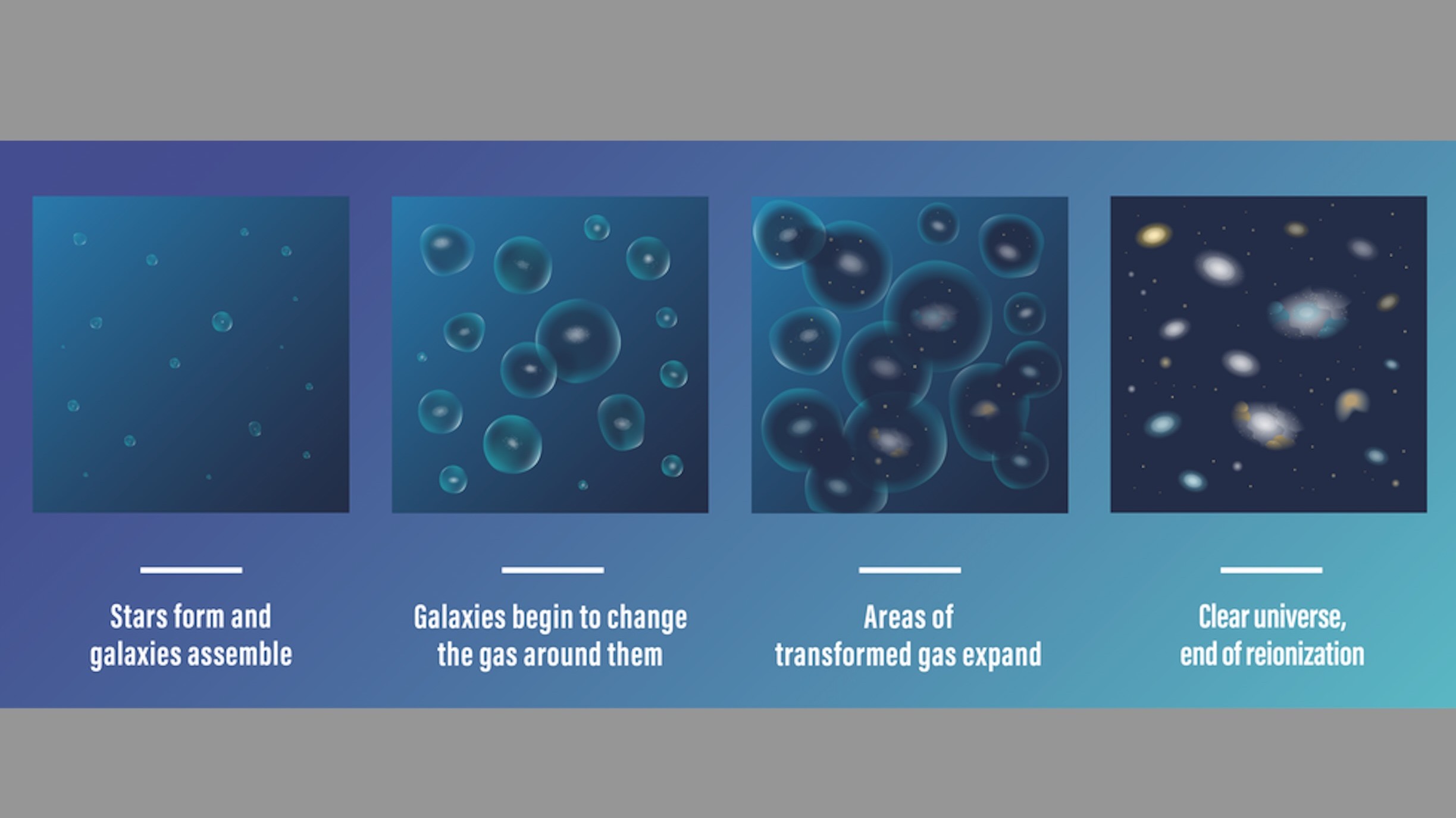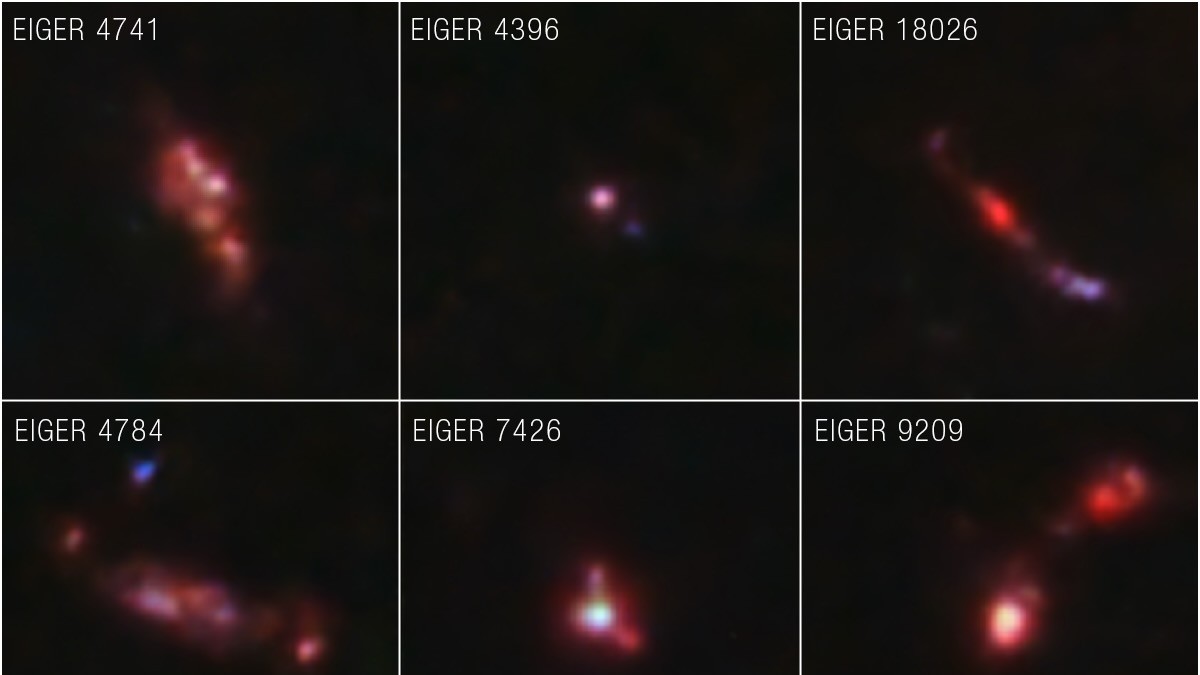James Webb Space Telescope reveals how galaxies made the early universe transparent

Shortly after the Big Bang, the universe was a dark and mysterious place.
And I mean really dark — the gas between stars and galaxies was opaque, so no light could shine through. As anyone who's ever looked through a telescope knows, that's no longer the case, since we can see celestial objects all throughout the universe from our vantage point here on Earth. But what caused the change in opacity?
Using observations from NASA's James Webb Space Telescope, an international team of astronomers led by Simon Lilly of ETH Zürich in Switzerland has an answer. The team looked back in time at galaxies from the end of the Era of Reionization, a dramatic period in the universe's history in which gas was heated, cooled and then reionized (given an electrical charge once again).
Related: James Webb Space Telescope (JWST) — A complete guide
Looking at those early galaxies, which existed just 900 million years after the Big Bang, the team saw that most of the gas in the universe was somewhere between opaque and transparent. But directly around the galaxies, everything was clear.
"With Webb's data, we are seeing galaxies reionize the gas around them," Daichi Kashino of Japan's Nagoya University, lead author of a new paper sharing the team's results, said in a statement.
Imagine that each of these young galaxies was surrounded by a balloon. Energy from newly forming stars reionized the gas inside that balloon. As the galaxies grew, the bubbles of reionized gas merged, creating even larger pockets of transparency. Eventually, they all combined to create a transparent universe.
Breaking space news, the latest updates on rocket launches, skywatching events and more!
The team was able to see this phenomenon in action thanks to the illumination of a quasar, an extremely bright supermassive black hole. Turning Webb toward one particular quasar, the astronomers observed its light moving through the universe's gas, being absorbed by opaque gas in some areas and traveling through transparent gas in others.
"By illuminating gas along our line of sight, the quasar gives us extensive information about the composition and state of the gas," Anna-Christina Eilers of the Massachusetts Institute of Technology, the lead author of another one of the team's newly released papers, said in the same statement.
Next, the team will more deeply research galaxies in five other areas of the sky that all have a central quasar — shedding more light (pun intended) on the opacity of the early universe.
The team announced these results in three papers published Monday (June 12) in The Astrophysical Journal. You can find them here, here and here.
Follow Stefanie Waldek on Twitter @StefanieWaldek. Follow us on Twitter @Spacedotcom and on Facebook.

Space.com contributing writer Stefanie Waldek is a self-taught space nerd and aviation geek who is passionate about all things spaceflight and astronomy. With a background in travel and design journalism, as well as a Bachelor of Arts degree from New York University, she specializes in the budding space tourism industry and Earth-based astrotourism. In her free time, you can find her watching rocket launches or looking up at the stars, wondering what is out there. Learn more about her work at www.stefaniewaldek.com.


